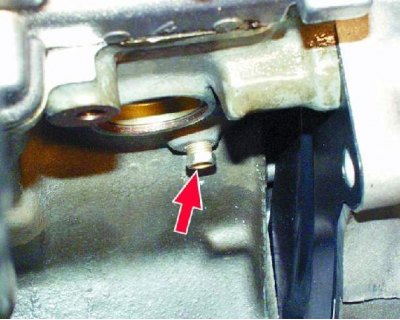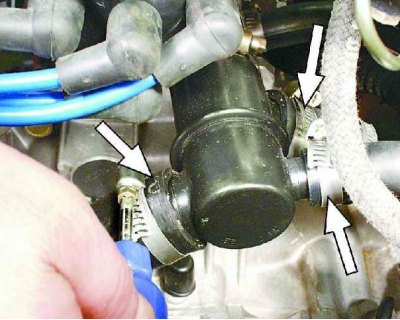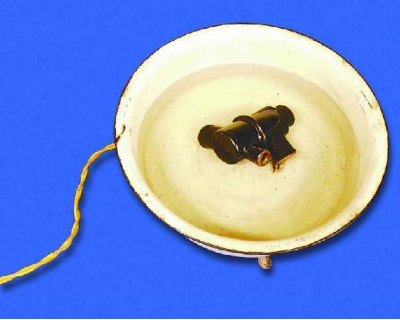
1 - radiator drain plug; 2 - thermostat; 3 - hose to the pump inlet pipe; 4 - hose to the expansion tank; 5 - lower radiator hose (diverting)

If the engine overheats during operation or slowly warms up to operating temperature, check the thermostat.
To check the thermostat on a car, start the engine and feel the lower radiator hose with your hand. It must be cold. After the coolant temperature reaches 87–92°C, the hose should begin to heat up. If this does not happen, you need to remove the thermostat and check its operation.

Thermostat: 1 - inlet pipe (from the radiator); 2 - rubber insert; 3 – solid thermosensitive filler; 4 - bypass valve spring; 5 - inlet pipe (from the engine); 6 - bypass valve; 7 - outlet pipe (to the pump); 8 - main valve spring; 9 - main valve; 10 - branch pipe (from expansion tank); 11 - piston

1. Loosen the bolts securing the crankcase protection and remove it.

2. Turn away a stopper of a broad tank.

3. Place a container under the drain hole, unscrew the drain plug of the cylinder block and drain the coolant from the cylinder block.

4. Place a container under the drain hole, unscrew the radiator drain plug and drain the coolant from the radiator.

5. Loosen the clamps.

6. Disconnect the three hoses from the thermostat housing.

7. Loosen the clamp and remove the thermostat with the hose. Then disconnect the short hose from the thermostat.

8. Dip the thermostat in water heated to 78-80°C. Heat the water, stirring constantly, until (87±2) °C.

9. At a temperature (87±2) °C The main thermostat valve should begin to open. If it doesn't, replace the thermostat. Install the thermostat in the reverse order of removal.
